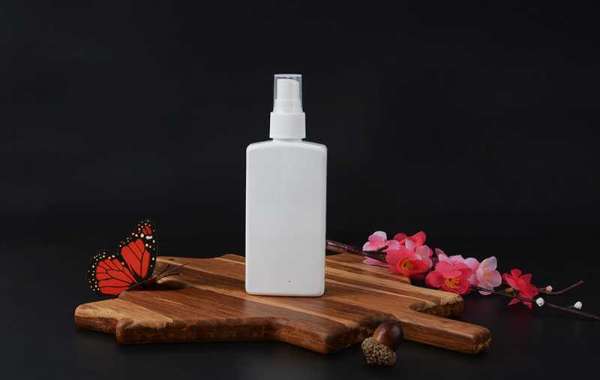The 100ml Plastic Spray Bottle is simply awesome. It is different from Food Packaging Bottle, mainly because they are more than just a container. They are also an excellent tool for dispensing liquid products. You can use them in chemical or organic cleaners, perfumes, colognes, air fresheners, hair sprays, pepper sprays, and even salad dressings.
However, the spray bottle also has a rather complicated structure. This is mainly due to its dispenser or nozzle. Due to this composition, spray bottles may be more challenging to clean and reuse.
Unlike other jars and bottles with simpler lids, typical dishwashing methods may not be sufficient to clean spray bottles. In addition, the contents they usually hold are mostly very strong chemicals and substances. Failure to clean the container thoroughly may leave a certain amount of these chemicals in the container. Therefore, these may contaminate the new contents of the bottle you are about to fill.
Cleaning spray bottles may not be as easy as cleaning most other types of containers. Of course, you also have some methods that can be achieved. The function of the spray bottles is too good to let this small problem prevent us from reusing them. do not worry. We will serve you.
Understand how the spray bottle works: parts and mechanisms
Before entering the cleaning part, let's take a closer look at the selected topic.
The spray bottle may be one of the best examples of how we can apply the principles found in nature to simple techniques. The ingenious idea behind the spray bottle is actually the same principle that enables our heart to pump blood throughout the body. This is what we call the reciprocating pump mechanism.
In a reciprocating pump, two alternating actions are involved. The first action is to collect liquid into a small chamber through an opening. The second action is to release the liquid through the second opening. This is how the heart collects oxygenated blood from the lungs into its chambers and then pumps it to other parts of the body.
In the spray bottle, whenever you press a button (or actuator), two actions will be performed; when you release the button, the button will rise and then perform the second action. Releasing the actuator will cause the pump to draw liquid from the inside of the container into a small cylindrical chamber. The chamber is located in the neck of the bottle. Then, pressing the actuator will release the liquid from the chamber into the nozzle and out of the bottle.
The reciprocating pump is a relatively simple concept, but it is very useful as a dispensing mechanism for spray bottles. It can also be found in many other applications, such as medical equipment and aerospace. This is also the basic principle of extracting water and oil from the ground.
Fine mist spray bottle
The fine mist spray bottle is a very popular spray bottle. This is a great spray bottle because it can spray liquid into such small droplets-so small that it almost turns its contents into a mist. Smaller droplets mean more uniform distribution. This is why it can be used well as a liquid dispenser.
The fine mist spray bottle can still be used in conjunction with the reciprocating pump. However, this type of spray bottle uses special parts called inserts. The insert is just a cigarette holder in which the liquid passes through a set of channels before leaving the bottle. Whenever the contents are distributed, the multiple channels in this group will form a foggy pattern.
The structure of the fine mist spray bottle is also ideal for minimizing the volume of the container. They are known for their smooth, elegant forms. The fine mist spray bottle is definitely the coolest crowd in the spray bottle world. They are ideal for colognes, perfumes, essential oil blends, yoga mat cleaners, air fresheners, etc. That's great, don't you think?
Parts of fine mist spray bottle
The composition of a fine mist spray bottle involves many different parts. The design and name of the part may vary from one manufacturer to another. Nevertheless, the principles used by all of them are basically the same.
As a general guide, we can refer to this list to determine the different components that build this smart device. Let's try to see what these components are so that we have a better understanding of how to clean them in the future.
Dust cap
Actuator
Insert
shut down
Gasket
Pump mechanism
Dip tube
Dust cap
The dust cap is the top of the bottle. This is a safety helmet that protects the actuator and nozzles from dust and other harmful substances. It also prevents you from accidentally pressing the actuator.
The dust cover adopts different materials and surface treatments. Some people may think that it is an auxiliary function, which is easy to lose. Nevertheless, its purpose is obviously also very important.
We recommend that you do not reuse spray bottles without dust caps. If possible, look for replacement covers.
Actuator or trigger
The actuator is covered by a dust cap, you can press this button to dispense the contents of the bottle. It sticks out of the container like its head.
You may be familiar with lotion dispensers with desktop-shaped actuators, which have a thin neck and a flat top. However, the actuator in the fine mist spray bottle is hollow to hold other components in it. In fine mist spray bottles, the actual spray holes can also be found on the surface of the actuator.
Insert or nozzle
The insert is actually the mouth of a fine mist spray bottle. However, beyond that, it is actually the part that defines the spray bottle. This tiny part turns the liquid content into a mist. Its interior is composed of multiple channels through which the liquid passes before leaving the container.
The insert is installed inside the actuator and only appears as a small hole on its surface.
shut down
The cap wraps the spray bottle like a collar directly below the actuator. The cap secures all components to the actual bottle. The dust cap is also placed on top of the sealing cover, where it snaps firmly into place.
The seal can be smooth, matte or satin. Sometimes it is even designed to connect seamlessly to the bottle.
Gasket
Although the gasket is one of the least obvious parts, it is actually crucial to the assembly of the spray bottle. The gasket is a thin flat material that can be used as a seal to prevent leakage of the contents. It is located at the bottom of the area where the cap meets the actual bottle.
The material used as the gasket may vary, depending on the substance to be leak-proof. It has been tested to ensure its compatibility and reliability.
Pump mechanism
The heart of every fine mist spray bottle is the pump mechanism. Unlike other parts, the pump mechanism consists of several smaller parts, including the piston, housing cover, valve stem, spring, seal and female housing.
The working principle of the pump has been explained in the previous section of this article. It is the function of transferring the liquid content from the container to the actuator. The alternate action of pushing the actuator down and making it rebound is what powers the pump. The release actuator allows the pump to draw liquid from the bottle and fill its chamber. Therefore, pushing the actuator down is the reason for driving the liquid from the chamber to the insert and out of the bottle.
Have you noticed that when the spray bottle is fresh from the store, it will not expel its contents during the first two presses? That's because of how the pump mechanism works. When the spray bottle is still not in use, the pump chamber is still empty. It requires the bouncing motion of the actuator to make it fill its chamber first. Naturally, only after the chamber is full, the contents will come out the second or third time.
Dip tube
In order for the liquid contents to enter the pump from the bottom of the bottle, they have to pass through a thin channel called a dip tube.
The dip tube is connected to the bottom of the pump and extends to the bottom of the container. The bottom is usually cut into a "V" shape or diagonal to prevent the tube from clogging.
Bottle/body
The actual bottle or bottle body is the largest part of the entire spray bottle. It can basically hold the liquid content and can also keep the container upright.
Although most distribution parts are made of plastic (except springs), the valve body can be made of a variety of materials, such as plastic, metal, and glass.
In terms of the advantages of repeated use, we recommend that you choose a glass spray bottle. Glass has unique adsorption properties, making it more effective in holding liquids than other materials. Learn more about the benefits of glass bottles here.







